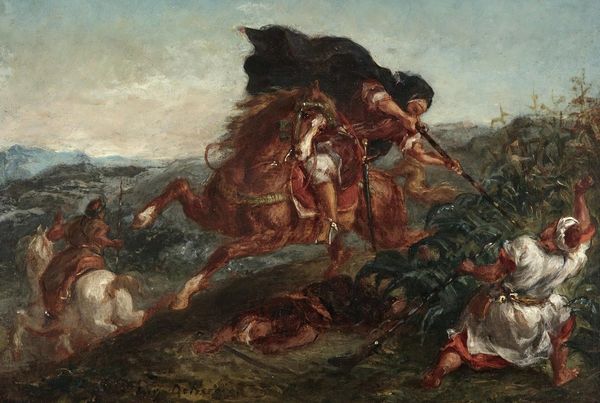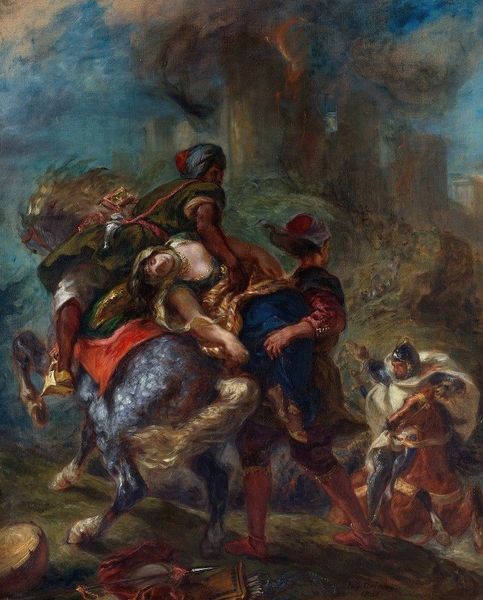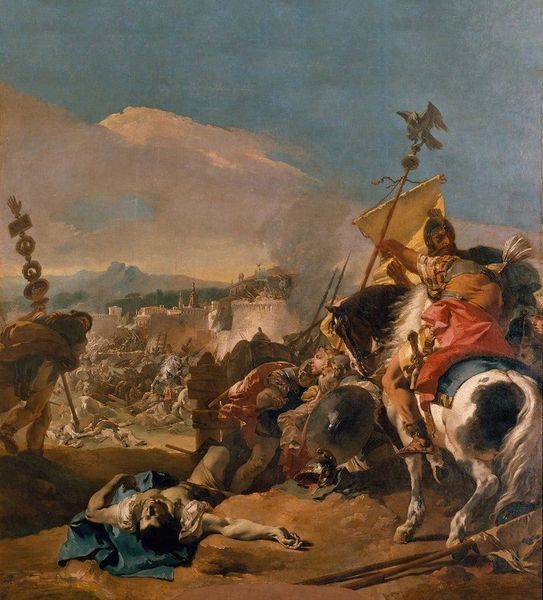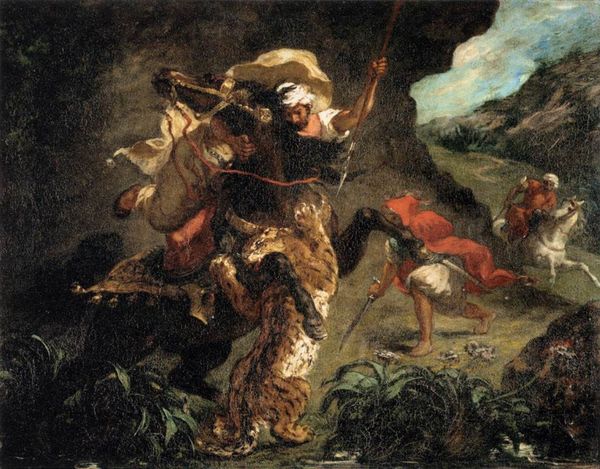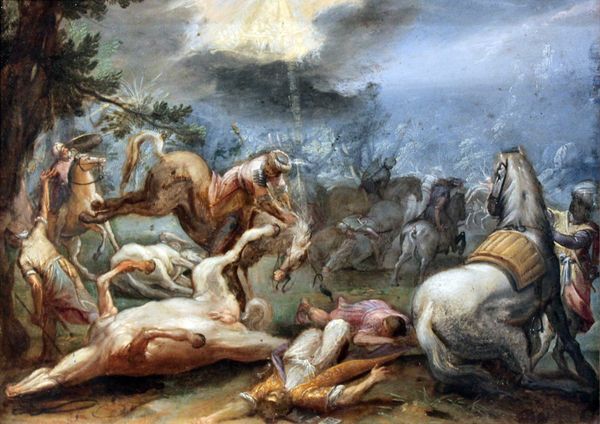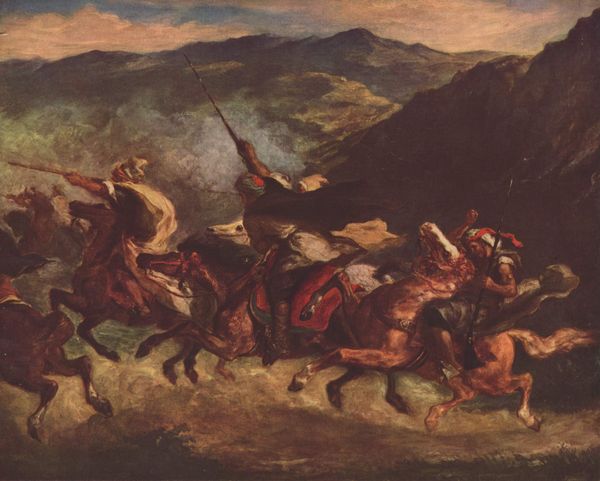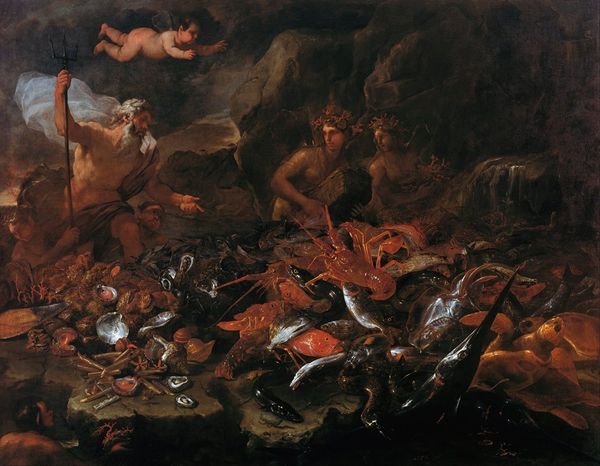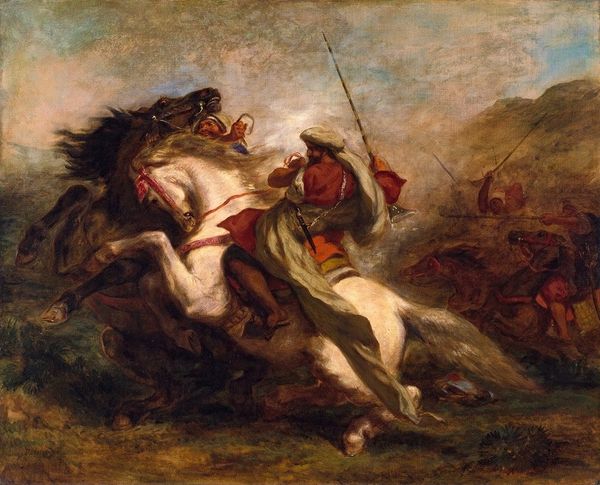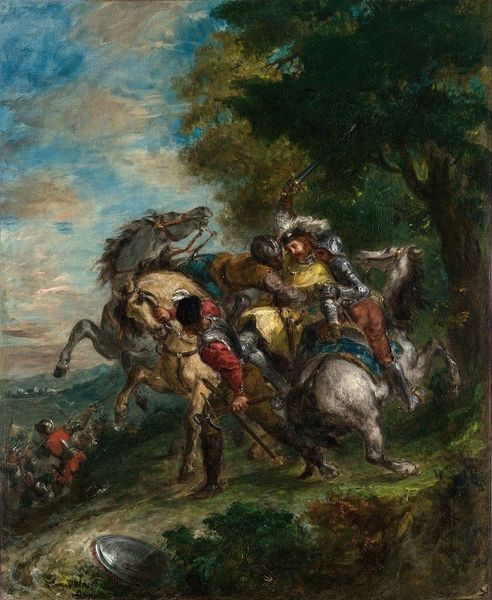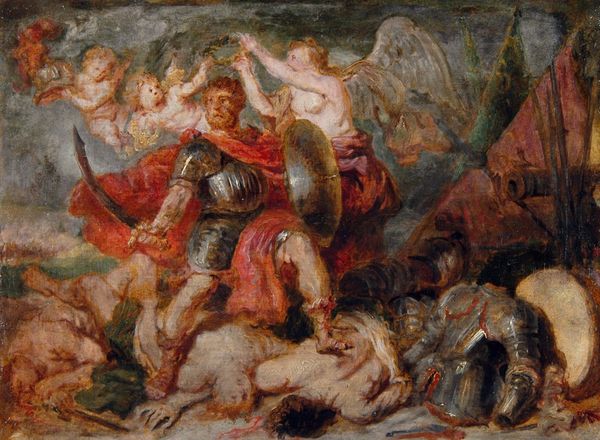
#
abstract painting
#
animal
#
fantasy art
#
possibly oil pastel
#
oil painting
#
fluid art
#
acrylic on canvas
#
underpainting
#
mythology
#
painting painterly
#
watercolour illustration
#
watercolor
Dimensions: 76.5 x 98.5 cm
Copyright: Public domain
Curator: Well, the air fairly vibrates with raw energy, doesn't it? What strikes you first about this swirling chaos? Editor: Complete and utter brutality. There is a power struggle at play here. But perhaps it's less about the animals, more about how the colonial imaginary casts the Orient as this barbaric other. Curator: Indeed, Eugene Delacroix’s "Lion Hunt," painted in 1861, plunges us into a whirlwind of fur and frenzy, inspired, I suppose, by his sojourn in North Africa decades before. Editor: And that 'frenzy' seems strategically deployed, framing ideas of colonial domination, painting both humans and the lions as entangled in a dance of power. How do we see the artist reinforcing such hierarchies here? Curator: The brushstrokes themselves feel frantic, mirroring the hunt's chaos, wouldn’t you say? Observe the riders rearing back on horseback, and the contrast in coloring: that rich, earthy palette evokes both warmth and danger, the thick application suggesting maybe he laid the paint on as desperately as these fellows are slashing about with swords! Editor: The composition reinforces a sort of dominance, surely, the bold orientalist stereotypes clashing directly with the animal. Yet what seems to be glorified violence serves ultimately as commentary on French colonial power—its assumed dominance challenged, undermined by such theatrical renderings. The romantic exoticism feels like a mask. Curator: A mask, perhaps! One gets the impression of raw spectacle above accuracy—Delacroix had never seen a real lion hunt. Perhaps this flamboyant fantasy reveals more about Western anxieties than any genuine portrayal of the East? It’s theatrical, almost operatic, isn't it? Editor: Yes, operatic perfectly captures it. A stage set for Western fantasies to be enacted. And who is granted center stage in this drama? Not the lions in their own habitat, not the individuals who navigate these landscapes daily. But a particular form of domination taking on flesh. Curator: Interesting. So beyond the visceral thrill, there's a rather queasy tension lingering just beneath those frantic brushstrokes, then. Makes one wonder at whose expense this exotic narrative is crafted. Food for thought! Editor: Absolutely. It pushes us to reflect critically on how these images from the past shaped—and continue to shape—our understanding of identity and difference.
Comments
No comments
Be the first to comment and join the conversation on the ultimate creative platform.
